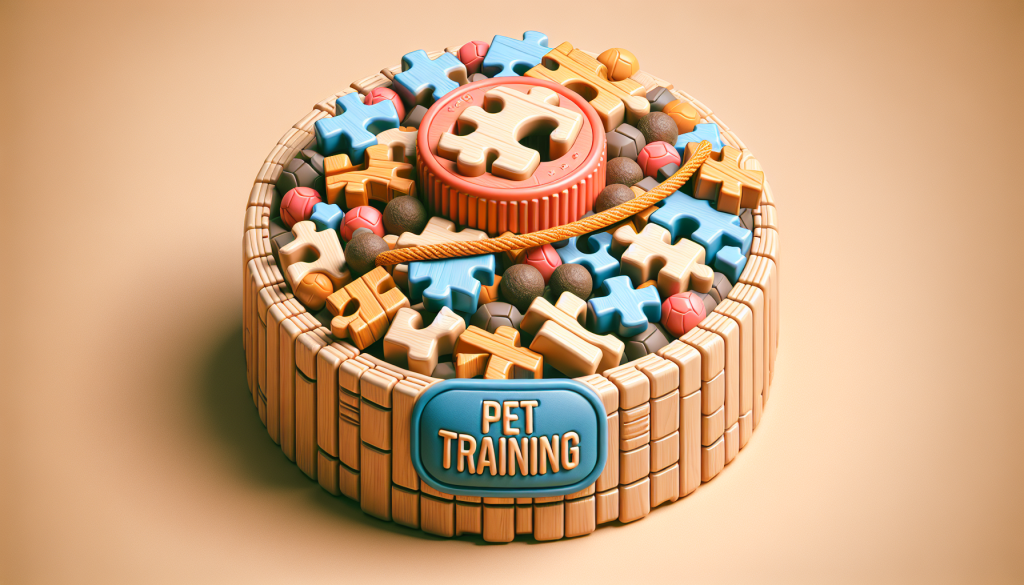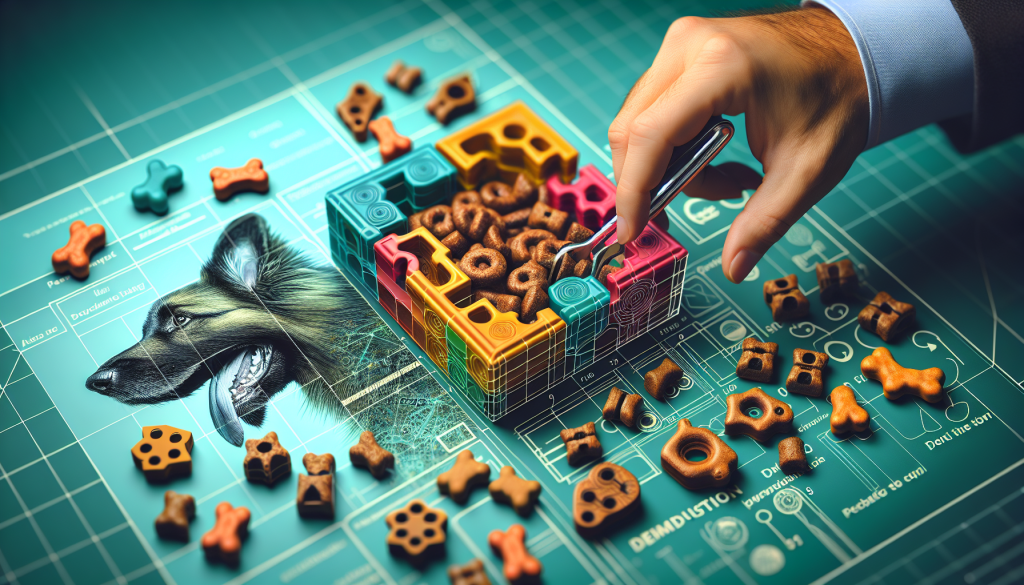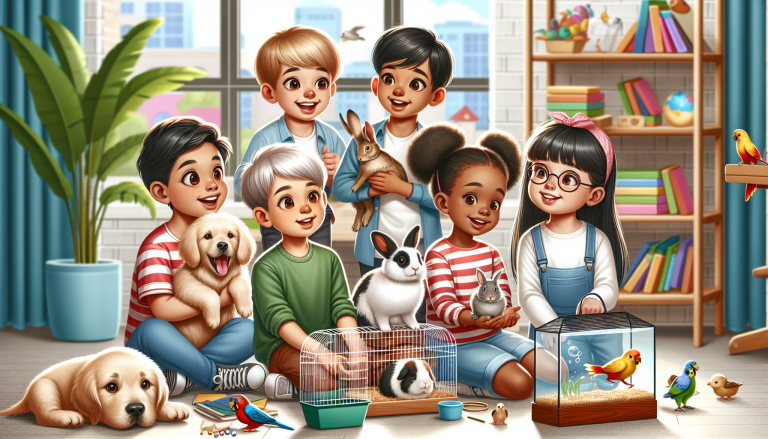So you’ve decided to take the plunge and get yourself a furry companion. Congratulations! Now comes the fun part – training your new pet. Whether you’ve adopted a mischievous puppy or a curious kitten, this beginner’s guide will equip you with the essential knowledge and techniques to train your pet effectively. From basic commands to housebreaking tips, we’ve got you covered. So grab your treats and let’s embark on this exciting journey together!
Table of Contents
ToggleChoosing the Right Pet
Choosing the right pet is a big decision that requires careful consideration. Before welcoming a new furry friend into your life, it’s important to research different types of pets to find one that suits your lifestyle and living situation. Understanding the commitment involved is crucial as well, as owning a pet is a long-term responsibility. By taking the time to explore your options and evaluate your readiness, you can ensure a successful and fulfilling companionship with your chosen pet.
Researching Different Types of Pets
When researching different types of pets, consider factors such as size, temperament, maintenance needs, and exercise requirements. Dogs, cats, birds, small mammals, and reptiles all have unique characteristics that may align well with your preferences and lifestyle. Do you prefer an active pet that enjoys outdoor adventures, or a calm companion that loves cuddling indoors? Are you allergic to pet dander? Answering these questions will help narrow down your options and determine which type of pet is most suitable for you.
Considering Your Lifestyle and Living Situation
Your lifestyle and living situation play significant roles in selecting the right pet. If you lead a busy, on-the-go lifestyle with limited time for pet care, a low-maintenance pet like a cat or a small reptile may be a better fit. On the other hand, if you have ample time, energy, and space, a dog or an active breed of cat may be more suitable. Additionally, take into account any restrictions imposed by your living situation, such as pet policies or the availability of outdoor spaces for exercise and play.
Understanding the Commitment Involved
Owning a pet is a long-term commitment that requires time, effort, and financial resources. Pets need food, grooming, regular veterinary care, and plenty of love and attention. Before bringing a pet into your home, ensure you understand the commitment involved and are prepared to provide for their physical and emotional needs throughout their lifetime. Remember, your pet will rely on you for their well-being and happiness, so be sure you are ready for the responsibility before making the decision.
Understanding Basic Training Principles
Basic training is an essential aspect of pet ownership that ensures a well-behaved and happy companion. By understanding and applying basic training principles, you can build a strong foundation for your pet’s obedience and social skills.
Using Positive Reinforcement
Positive reinforcement is a key training technique that involves rewarding desired behaviors to encourage their repetition. When your pet follows a command or exhibits good behavior, reward them with treats, praise, or a favorite toy. This positive experience reinforces the behavior and motivates your pet to continue behaving well. It is important to remember that positive reinforcement is more effective and humane than punishment-based training methods.
Establishing Clear Communication
Clear communication is vital in training your pet. Use consistent verbal cues or hand signals to indicate what you want your pet to do. For example, saying “sit” while gently guiding your dog into the sitting position conveys a clear command. Pairing these commands with rewards helps your pet understand what is expected of them and strengthens their learning and response.
Being Consistent and Patient
Consistency and patience are essential when training your pet. Set clear rules and boundaries and consistently enforce them. This helps your pet understand what is expected and reduces confusion. However, remember that patience is key. Training takes time, and each pet learns at their own pace. Be patient and understanding as you work with your pet, providing encouragement and support throughout the training process.
Setting Realistic Goals
Setting realistic goals is crucial in training your pet. Start with simple commands and behaviors, gradually progressing to more complex tasks as your pet becomes more proficient. Break down each desired behavior into small, achievable steps to help your pet succeed. Celebrate each milestone and adjust your expectations based on your pet’s individual abilities. By setting realistic goals, you can ensure a positive and productive training experience for both you and your pet.
Creating a Positive Training Environment
Creating a positive training environment is essential for effective and enjoyable training sessions. By following these tips, you can ensure that your pet feels safe, comfortable, and motivated to learn.
Designating a Training Area
Designating a specific area for training helps provide structure and focus during your sessions. Choose a quiet, well-lit space free from distractions where you and your pet can concentrate. This dedicated training area signals to your pet that it’s time to pay attention and learn.
Minimizing Distractions
Minimizing distractions is key to keeping your pet’s attention during training. Turn off the TV, close windows to block outside noise, and keep other pets or young children in another room. By reducing distractions, you create an environment where your pet can fully focus on the training session, leading to better results.
Using Proper Training Tools and Equipment
Having the right tools and equipment is important for effective training. Collars, leashes, clickers, and treats are commonly used tools in training pets. Choose equipment that is appropriate for your pet’s breed, size, and training needs. It’s crucial to select high-quality, comfortable gear that is safe and secure for both you and your pet.
Ensuring Safety and Comfort
Ensure that your training environment is safe and comfortable for your pet. Remove any potential hazards, such as small objects or loose wires, that your pet could chew on or get entangled in. Use treats and rewards your pet finds appealing and consider their individual preferences. By creating a safe and comfortable atmosphere, you set the stage for successful and enjoyable training sessions.
Building a Bond with Your Pet
Building a strong bond with your pet is the foundation of a loving and trusting relationship. By investing time and effort into strengthening your connection, you create a deeper understanding and mutual respect that enhances your training experience.
Spend Quality Time Together
Spending quality time with your pet outside of training sessions is crucial in building a bond. Engage in activities that your pet enjoys, such as playtime, walks, or grooming. Regularly setting aside dedicated bonding time fosters trust, affection, and a deeper emotional connection with your pet.
Develop Trust and Mutual Respect
Trust and mutual respect are essential elements of any successful relationship, including the one you share with your pet. Be patient, gentle, and consistently reliable in your interactions with your pet. Avoid harsh or punitive methods that can damage your pet’s trust in you. By earning your pet’s trust and respecting their boundaries, you establish a solid foundation for effective training and a healthy bond.
Understanding Your Pet’s Body Language
Understanding your pet’s body language is crucial for effective communication and the development of a strong bond. Pay attention to their facial expressions, tail position, and overall body posture to gauge their emotions and needs. Recognizing signs of stress, fear, or excitement helps you adjust your training methods and respond appropriately, ensuring a positive and comfortable learning experience for your pet.
Recognizing Your Pet’s Individual Needs
Every pet is unique, with their own personalities, preferences, and needs. Take the time to understand your pet’s individual quirks, desires, and limitations. Tailor your training approach to their specific needs, adjusting your methods or pace as necessary. By recognizing and respecting your pet’s individuality, you can create a training experience that is fulfilling and effective for both of you.
Basic Obedience Training
Basic obedience training lays the foundation for a well-behaved pet and helps foster a harmonious relationship. By teaching your pet essential commands and behaviors, you establish clear expectations and strengthen communication.
Teaching Sit, Stay, and Down Commands
Teaching basic commands such as sit, stay, and down is crucial for managing your pet’s behavior and ensuring their safety. Start with one command at a time, using positive reinforcement to encourage compliance. Consistently practice these commands in different environments and gradually increase distractions to solidify your pet’s understanding.
Training a Reliable Recall
A reliable recall command, such as “come,” is essential for your pet’s safety. Teaching your pet to come when called takes patience and practice. Begin in a low-distraction environment, using treats or toys as rewards. Gradually increase the distance and distractions, reinforcing their response each time. By consistently practicing recall training, you can ensure that your pet will come to you in any situation.
Understanding and Using Reward Systems
Reward systems play a crucial role in obedience training. Use high-value treats, verbal praise, or playtime as rewards for successfully following commands. Be consistent and timely with your rewards, associating them directly with the desired behavior. By utilizing reward systems effectively, you reinforce positive behaviors and encourage your pet to repeat them.
Introducing Leash Training
Leash training is essential for safe and enjoyable walks with your pet. Start by associating the leash with positive experiences, such as treats or short walks in a familiar environment. Gradually introduce leash pressure and teach your pet to walk calmly beside you. Consistency, positive reinforcement, and patience are key to successful leash training.
House Training Your Pet
House training is an important aspect of pet ownership, ensuring that your pet understands where and when to relieve themselves. Consistency, routine, and positive reinforcement are essential for successful house training.
Establishing a Regular Toilet Routine
Establishing a regular toilet routine helps your pet understand when and where it’s appropriate to relieve themselves. Take your pet outside or to their designated toileting area at consistent times throughout the day. Be patient and reward them when they eliminate in the desired location. Over time, your pet will learn to associate the routine with the appropriate behavior.
Using Crate Training for Dogs
Crate training is a valuable tool for house training dogs. Dogs have a natural instinct to keep their sleeping area clean, making crates an effective aid in preventing accidents. Introduce the crate gradually, making it comfortable and inviting with bedding and toys. Use positive reinforcement to encourage your dog to willingly enter the crate. With patience and consistency, your dog will learn to view the crate as a safe and secure space.
Recognizing and Responding to Signs of Need
Recognizing and responding to your pet’s signs of needing to eliminate is crucial for successful house training. Common signs may include pacing, sniffing, circling, or whining. Learn to identify these cues and promptly take your pet outside or to their designated spot. By being attentive to their needs, you can prevent accidents and reinforce desired behaviors.
Dealing with Accidents and Mishaps
Accidents and mishaps are a natural part of the house training process. It’s important to respond calmly and avoid punishment-based methods. Clean up accidents using pet-friendly cleaning products that eliminate odors. Avoid scolding your pet or rubbing their nose in the mess, as this can create fear and hinder their progress. Instead, focus on reinforcing positive behaviors and redirecting your pet’s attention to appropriate toileting areas.
Socializing Your Pet
Socializing your pet is essential for their overall well-being and helps prevent behavioral issues. By exposing your pet to different people, animals, and environments, you help them develop appropriate social skills and reduce anxiety or fear in unfamiliar situations.
Introducing Your Pet to Different People and Animals
Introducing your pet to different people and animals in a controlled and positive manner is crucial for socialization. Start with calm, friendly individuals or animals, gradually exposing your pet to a variety of personalities, ages, and species. Reward good behavior and gradually increase the complexity of social interactions, ensuring that your pet feels safe and comfortable throughout.
Positive Experiences with Other Pets
Positive experiences with other pets are invaluable in shaping your pet’s socialization skills. Arrange playdates or supervised interactions with well-behaved and vaccinated pets. Monitor their interactions closely, rewarding favorable behavior and intervening if necessary. These positive experiences help your pet learn appropriate social cues and establish good manners.
Ensuring Positive Interactions in Public Spaces
Ensuring positive interactions in public spaces is essential for a well-socialized pet. Gradually expose your pet to different environments, such as parks, markets, or pet-friendly cafes. Start with quieter settings and gradually increase the level of exposure, always rewarding calm and appropriate behavior. By exposing your pet to a variety of public spaces, you help them become comfortable and well-behaved members of society.
Curbing Undesirable Behaviors
It is not uncommon for pets to exhibit undesirable behaviors. However, with patience, understanding, and effective training techniques, you can curb these behaviors and foster a well-behaved pet.
Identifying and Addressing Specific Behavior Problems
Identifying and addressing specific behavior problems is the first step towards finding solutions. Whether it’s excessive barking, destructive chewing, or aggression, understanding the underlying causes is crucial. Consult with a professional trainer or behaviorist to develop a targeted training plan that addresses the root of the problem.
Using Effective Techniques to Correct Behavior
Effective techniques to correct behavior focus on positive reinforcement and redirection. For example, if your pet is chewing on furniture, provide appropriate chew toys and redirect their attention to those. Avoid punishment-based methods, as they can lead to fear or anxiety. Instead, reward and reinforce desired behaviors to encourage your pet to make better choices.
Avoiding Punishment-Based Training Methods
Punishment-based training methods, such as yelling or physical discipline, are not recommended. These methods can damage the bond between you and your pet and may lead to increased fear or aggression. Focus on positive reinforcement and redirection instead, rewarding good behavior and redirecting undesired behaviors towards more appropriate alternatives.
Training for Mental Stimulation
Training is not just about teaching obedience commands; it also provides mental stimulation for your pet. By incorporating mental exercises and challenges into your training routine, you can keep your pet engaged and mentally sharp.
Introducing Puzzle Toys and Interactive Games
Puzzle toys and interactive games are excellent tools for mental stimulation. These toys require your pet to think, problem-solve, and use their natural instincts, providing a fun and engaging mental workout. Experiment with different types of toys and games to find what captures your pet’s interest and challenges their abilities.
Teaching Tricks and Commands to Challenge the Mind
Teaching tricks and commands that go beyond basic obedience challenges your pet’s mind and keeps training sessions interesting. Teach your pet fun tricks such as “shake hands,” “roll over,” or “play dead.” These commands require focus and concentration, stimulating your pet mentally and reinforcing the bond between you.
Engaging in Enrichment Activities and Exercises
Engaging in enrichment activities and exercises outside of training sessions is key to fulfilling your pet’s mental needs. Provide puzzle feeders, hide treats around the house, or create a scavenger hunt for your pet to enjoy. Incorporate variety into your pet’s daily routine, ensuring they have opportunities to explore, problem-solve, and stay mentally stimulated.
Continuing Training Throughout Your Pet’s Life
Training is an ongoing process that continues throughout your pet’s life. By reinforcing previous training, troubleshooting challenges that arise, and expanding training to include advanced skills, you can ensure a well-behaved and adaptable pet.
Reinforcing Previous Training
Reinforcing previous training is important to maintain your pet’s obedience and prevent regression. Regularly review and practice previously learned commands and behaviors to reinforce their understanding. Gradually increase the difficulty level to keep your pet challenged and engaged.
Troubleshooting Challenges that Arise
Challenges may arise during training, such as stubbornness, distractions, or regression. Troubleshoot these challenges by identifying the root cause and adjusting your training approach accordingly. Seek guidance from professional trainers or behaviorists if needed to overcome specific obstacles.
Expanding Training to Include Advanced Skills
Once your pet has mastered basic obedience, consider expanding their training to include advanced skills. Advanced skills, such as agility training or advanced commands, provide mental and physical stimulation and strengthen the bond between you and your pet. Enjoy the journey of continued learning and growth together.
In conclusion, training your pet is a journey that requires time, patience, and understanding. By choosing the right pet, understanding basic training principles, creating a positive training environment, building a bond, and continuing training throughout their life, you can ensure a well-behaved and happy companion. Remember to approach training with a friendly and positive tone, enjoy the process, and celebrate the successes along the way. Your dedication and effort will result in a well-adjusted and loving pet that brings joy to your life.








